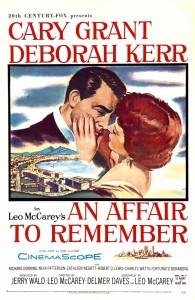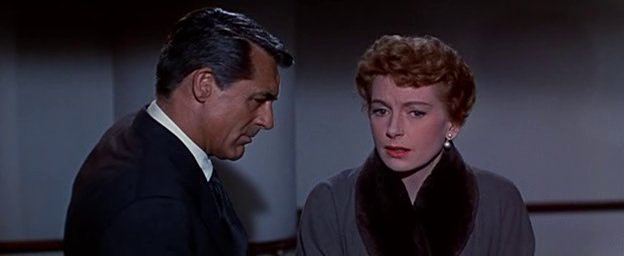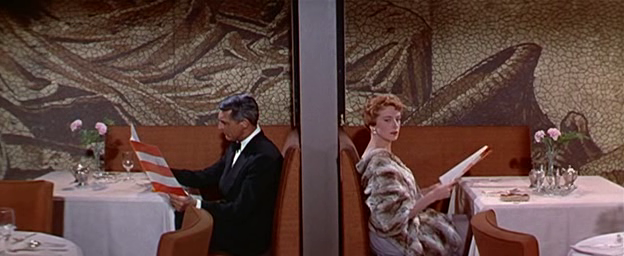Affair to Remember, An (1957)
“Winter must be cold for those with no warm memories.”
|
Synopsis: |
|
Genres, Themes, Actors, and Directors:
Review:
The first line actually exists in the original film as well, but as spoken by Dunne (without the pun-worthy retort by her lover), it works — unlike here, where (despite valiant attempts by Kerr and Grant to “keep it real”) it’s simply groan-worthy. Indeed, much about An Affair to Remember reminds one of Douglas Sirk’s similarly overblown ’50s melodramas, but without the sassy heat; McCarey’s sentimental tendencies completely overwhelm this “affair”, as epitomized by the inclusion of two utterly gratuitous musical numbers involving a diverse group of moppets (er, children), both of which feel like they were taken straight out of McCarey’s Going My Way (1944) or The Bells of St. Mary’s (1945). With that said, there’s a reason why this film remains such an enduring favorite: Kerr (always a consummate actress) and Grant have decent chemistry together, and one can’t help getting caught up in their romance simply given how neatly it represents one of our most entrenched fantasy scenarios — giving up “everything” (in this case, a current “good enough” lover, as well as easy wealth) for the sake of true love. I’m recommending AATR as must-see one-time viewing simply given its cult status, but it will only be of enduring interest to those who don’t mind their romances served with a heavy dose of manipulation. Redeeming Qualities and Moments: Must See? (Listed in 1001 Movies You Must See Before You Die) Links: |






One thought on “Affair to Remember, An (1957)”
Agreed – a once-must, for its place as an unusual cult classic and for the particular chemistry between Grant and Kerr (who manage to make this piece work – and that’s not easy).
It’s certainly odd that many probably do prefer this remake over McCarey’s better, original version (if most of them have even seen that one). But, alas, Cinemascope and Technicolor do make a big difference for many viewers.
Personally speaking, this is not my kind of movie at all – but mainly because I’m not a huge McCarey fan and don’t generally find his work all that memorable (even if he does occasionally have certain strengths).
Still, it’s probably too well-known a title to ignore. And it’s intriguing watching the stars succeed so well with material that is so thin. ~and sometimes borderline annoying. (As with the 6-month waiting period aspect, Kerr’s decision to keep her accident a secret from Grant is almost infuriating. That kind of pride – or whatever it’s supposed to be – unfortunately causes more harm from the secrecy, since it leaves Grant something of an emotional wreck. Of course, it’s the ‘romantic tension’ of all of that that adds to the ‘drama’. But, if you ask me, it’s nonsensical baloney.)
A small plus factor with this version is that McCarey gives Grant and Kerr freedom to improvise to a degree, which is helpful because that at least humanizes this potentially sappy couple and balances the film’s tone somewhat (by way of its gentle humor; I love when Grant playfully tells Kerr to “Oh, shut up.”).
With Cathleen Nesbitt in the Ouspenskaya role, we’re given yet another pleasant reason to watch.
Notes:
– A DVD extra informs us of what was going on behind-the-scenes during filming: Grant was almost madly pining for Sophia Loren (who apparently was finding his non-stop attention annoying, since she had fallen in love with Carlo Ponti) and Kerr was in the midst of a collapse of her own “storybook” marriage.
– One of the memorable moments for me in ‘Sleepless in Seattle’ was completely improvised: when Tom Hanks and Victor Garber, after hearing how ‘An Affair to Remember’ can make women weep, get all faux-sentimental over scenes in ‘The Dirty Dozen’. (The ‘AATR’ reference in ‘SIS’ resulted in a demand for copies of ‘AATR’ that reached around 2 million.)